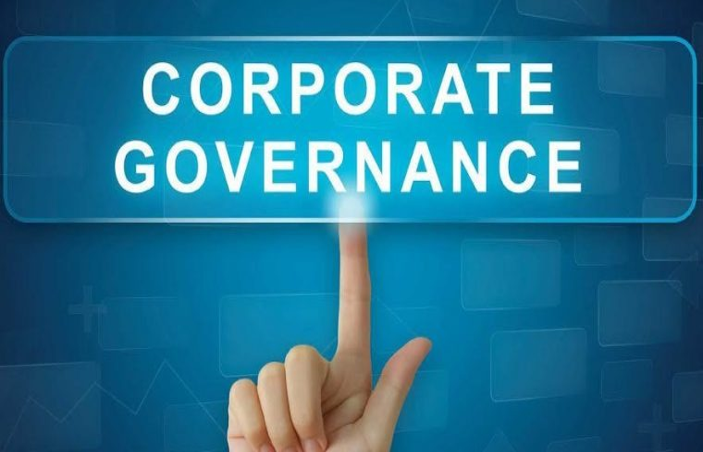Corporate Governance- Doing the Right thing
By Arif Zaman
Head of Internal Audit ,Emaar Industries & Investments, UAE
Today so many companies fail in combating the wrongdoing despite proclaiming effective governance mechanism within the organization. Most of the wrong dong happen due to human greed. It is very difficult to combat that because the basic premise of the organization formation is based on the maximization of profit.
Now, a lot of effort is being made to promote ethical and sustainable business. It’s a journey and the current CG practice is a step in the right direction.
What is Corporate Governance (CG)
In simple terms, CG stipulates how effectively we run the business in an ethical manner. It could be through different codes (guidelines) either adopted voluntarily as a best practice or involuntarily imposed through government legislation.
Corporate Governance the way by which we can run the business effectively.
I always thought Corporate Governance (CG) is a pretty simple concept, but after a decade in a professional environment, I realized the concept is still confused by many professionals. Therefore, today I thought to give a brief explanation of the CG concept. There are many definitions of the CG, but I chose to keep this discussion simple in my own way to avoid unnecessary technical jargon.
How do we know which best practice to follow in term of CG in our company
CG is a relatively new area in comparison to other business areas and got is prominence in the recent past due to major fraud scandals happen in a different part of the world. Unfortunately, these scandals have one thing in common that the management as part of the wrongdoing. In order, to overcome the agency problem (principle/agent relationship) certain rules and regulations were made. Initially the CG practice we least regulated by the law but after seeing big corporation falling, the government and regulatory body intervene to enforce through legislation and the classic example is SOX. The use of right CG practice based on several variables such as company legal set-up e.g. limited liability, private joint-stock or public joint stock etc., industry norms, market pr
Agency Theory
Before explaining the concept, it is important to understand the agency theory.
Agency theory is used to understand the relationship between the Agent (company’s management team or managers) and the Principle (shareholder/business owner).
The owner/shareholder of the company hires the executive managers to maximize their wealth, however, the executive managers (inherently) may have conflicting self-interest to maximize their income at the cost of the owner’s wealth.
In economics, we say moral hazard occurs when one person takes more risks because someone else bears the cost of those risks. We have seen this example in our daily life. The politician takes a decision on behalf of voters at times in their self-interest (help in their political agenda), which eventually affects the voters in the long run usually manifested by the negative consequences of their decision.
Similarly, in business, the executive management takes a decision which serves them to meet their short-term target to maximize their pay cheque (performance-based incentive) at the cost of company long-term growth. The following famous business scandals and many more demonstrate the agency problem:
The fall of Enron
The executive manipulated the accounting report that made the stock seem more valuable than it truly was. After the scandal was uncovered, thousands of shareholders lost millions of dollars as Enron share values plummeted.
Goldman Sachs and the real estate bubble
The financial analysts invest against the best interests of their clients in much risky mortgage-backed securities known as CDO’s, then sold them betting that the mortgages would undergo foreclosures. The bubble busted in 2008 and the prices of those CDO’s dropped, and the investors suffered at the cost of executive management decision.
How To Overcome The Agency Problem
The shareholders are sitting outside the organization and delegate to power to the executive management to run the business on their behalf to maximize their wealth while securing their long-term business sustainability and profit. The shareholders take some initiative under the CG concept to oversee the work of executive management, these are:
- The shareholders form a Board and nominate the Board of Director to oversee the work of the executive management.
- The Board make committees (comprises of the board member) to give special attention to certain areas e.g. remuneration and nomination committee (to oversee and decide the selection and remuneration of the executive management), audit committee (to oversee the companies operational controls effectiveness), risk committee (to oversee the risk exposure affecting the business) etc.
- These committees are assigned certain role and responsibilities and they make accountable management to perform their duties in the best interest of shareholders.
- The management develop operating procedures in the form of Policies and Procedures to run the business effectively.
- The management is accountable to the Board and it’s committees on their performance.
- Eventually, these committees report to the Board and the Board is accountable in front of the Shareholders to safeguard their interest.
Does CG Effective To Curb Business Wrong Doing?
Not really, but these initiatives are a positive move in the right direction. It is always a challenge to regulate human greed which is ultimate behind most of the financial wrongdoing in companies.
Based on the above initiative, we can conclude the concept of CG is nothing but
“The way by which we can run a business effectively”.
There are certain bodies in the world that have device the concept of CG into a set of rules and regulations and sometime in the form of legislation e.g. the
United States Congress passed the Sarbanes-Oxley Act (SOX) to protect shareholders and the general public from accounting errors and fraudulent practices in enterprises, and to improve the accuracy of corporate disclosures.
CG is still a new concept and evolving with the changes in the business environment. Like any other laws and regulations, the concept and the application of CG is maturing, and the legislators and government bodies are playing the catch-up roles to regulate the business doings in more ethical and effective manner.
key main components of the strong governance framework within any company
A company strong risk culture, control environment and above all tone at the top to encourage, motivate and enforce the ethical work culture within the organization could only lead to an effective resilient control environment.
Do not think that the Board members know everything, sometimes it is the job of the second and third line of defense to pitch the right practice. The culture of the organization matters a lot. The culture set from the top, if the tone at the top is not effective, more and more wrong are expected to befall in the corporate practice. Last but not least, the organization and the Board should not only focus on compliance as a tick box approach but live by the true spirit of doing the right thing in any given circumstances.
Strong CG framework does not only reflect through compliance with the code
but to live with the basic fundamental of doing the right thing.
- Agile Auditing Methodology - June 22, 2021
- To Be or Not To Be an Internal Auditor? - June 11, 2021
- Governance, Risk & Compliance (GRC) – Big Time Confusion! - March 11, 2021



Stay connected